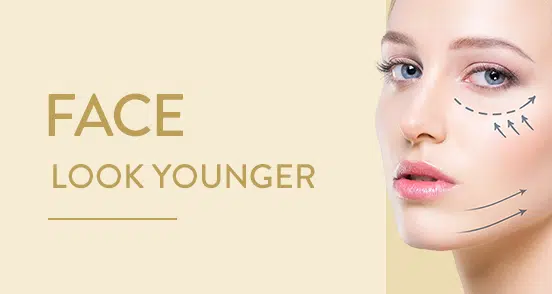The Best Skin Care & Laser Center in DFW
Some skin conditions can be a warning sign of sorts, and even minor skin diseases may result in permanent scarring if not attended to promptly.
What are the most common skin diseases and conditions, how can you recognize them, and how are they treated?
Signs of skin diseases, such as a bump, a rash or a dry patch, can be perplexing. In fact, in some cases, they can be downright anxiety-inducing.
While some of these signs and symptoms are completely harmless (but nevertheless annoying), others can be warning signs of more serious medical concerns. This round-up of skin conditions and symptoms may be able to help you decode your rash.
Although this list of signs may be useful, it’s not a substitute for a doctor’s advice. If you’re truly concerned that a skin problem is serious or abnormal, don’t hesitate to get help.
Skin conditions that can be treated with laser:
- Psoriasis
- Pruritus
- Skin rash
- Skin ulcer
- Swelling and irritation
- Severe burns and post-operative burns
- Soft tissue wounds
- Inflammation
- Hidradenitis
- Scars and keloids
- Hypertrophic scarring
- Radiation dermatitis
- Bruises
- Pressure sores
- Diabetic ulcers
Acne
Acne is the most common skin condition in the United States, affecting up to 80 percent of people in their teens and 20s. Contrary to popular belief, acne doesn’t necessarily go away once puberty is over.
A reported five percent of older adults are affected by acne as well. Moreover, hormonal changes caused by pregnancy and other conditions can cause acne to flare up. Adult acne can be more difficult to treat, and it’s a good idea to see a dermatologist if you haven’t outgrown this teenage nuisance.
Unfortunately, many old wives’ tales persist about acne, such as that eating chocolate will make one likely to develop the condition. Get the facts on what causes acne and the different treatment options available.
Atopic Dermatitis
Atopic dermatitis is the most common type of eczema and is considered a type of allergic (atopic) reaction. We aren’t certain exactly how atopic dermatitis occurs, but we do know that it runs in families in which allergies such as hay fever (allergic rhinitis), asthma, and atopic dermatitis occur.
Up to 15 percent of people experience some degree of atopic dermatitis in childhood (most people develop symptoms before the age of 5) and it affects around 15 million people in the United States.
The diagnosis of atopic dermatitis is made by looking at a number of major and minor features associated with the disease.
Bacterial Infections of the Skin
Bacterial skin infections are common and can vary from extremely mild to life-threatening in seriousness. About one out of every five people seen by a dermatologist has a bacterial skin infection. It is important to have an awareness of these infections as we often think of our skin as an impenetrable barrier. Good handwashing technique and prompt medical attention are important in treating these infections.
Most skin infections are caused by one of two bacteria: Staphylococcus aureus or a form of Streptococcus.
Even though most of these are caused by only two types of bacteria, these bacteria can cause a wide range of infections.
Impetigo is a common bacterial infection which occurs most often in young children and is very contagious. At first, the spots may resemble those of chickenpox with pus-filled sores.
Folliculitis is an infection which begins in the hair follicles. An infection which may occur after spending time in a hot tub, hot tub folliculitis, is often caused by a different bacteria known as Pseudomonas aeruginosa.
Boils of the skin are medically called either furuncles or carbuncles, depending on the size. These infections begin in a hair follicle, and if they do not drain on their own, may require a physician to perform an incision and drainage (I and D) in the office.
Cellulitis is an infection occurring in the deep layers of the skin. When extensive or when it occurs in people who have compromised immune systems, it can be very serious.
Erysipelas also called “St. Anthony’s fire” is an infection of the superficial layer of the skin which can be very painful.
Dermatitis
Your doctor may have said you have “dermatitis” but what exactly does that mean?
In actuality, most different skin conditions could be called dermatitis. Dermatitis simply means “inflammation of the skin.” Yet the term tends to be used for more specific conditions.
Some more common types of dermatitis include:
- Contact dermatitis – This type of dermatitis has been experienced by nearly everyone, and refers to redness or a rash on the skin in response to contact with specific substances. There are nearly 3000 substances that have been found to cause irritant contact dermatitis, ranging from strong acids or bases to the lotions that are used for dermatitis.
- Seborrheic dermatitis refers to the dryness and scaly skin that we call cradle cap in babies.
- Diaper dermatitis is commonly known as diaper rash.
- Stasis dermatitis is the reddish-blue rash often seen on the lower legs of those who have severe varicose veins and swelling of their ankles.
Herpes Simplex Virus Infections
There are two types of herpes simplex viruses: herpes simplex virus 1 (HSV-1) and herpes simplex virus 2 (HSV-2).
HSV-1 usually causes cold sores and HSV-2 genital sores, but there is some overlap. Most of the time HSV-1 and cold sores are mostly a nuisance, but in those who have a poor immune function, a generalized infection may develop which is very serious.
Chickenpox Virus and Shingles
The virus that causes chickenpox, varicella-zoster virus (VZV) is another herpes virus that can lead to skin problems. People who had chickenpox as children are at risk of later developing shingles. The rash of shingles is usually present in one “dermatome” or region of the body supplied by a nerve. For this reason, it is often located on only one side of the body but may occur nearly everywhere.
Shingles often cause pain before a rash appears, and the pain can be quite intense. Thankfully, prompt treatment with antivirals at the onset of the rash can reduce the amount of pain.








